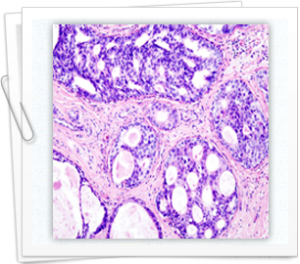Online CPR Certification Blog
Useful information about ductal carcinoma in situ
Date: June 30th, 2014
 Ductal carcinoma is of two types; ductal carcinoma in situ that is also known as the intraductal carcinoma and invasive ductal carcinoma. It occurs when cells of breast ducts experienced uncontrolled growth. ‘in situ’ is a phrase that meaning ‘in its original place’. Generally, this cancer isn’t invasive in the sense that it is just contained in the ducts and it is usually the early stage of breast cancer. It is referred to as Stage 0 of breast cancer and there is excellent prognosis for women who have been diagnosed with it and the good news is that most of these women get cured.
Ductal carcinoma is of two types; ductal carcinoma in situ that is also known as the intraductal carcinoma and invasive ductal carcinoma. It occurs when cells of breast ducts experienced uncontrolled growth. ‘in situ’ is a phrase that meaning ‘in its original place’. Generally, this cancer isn’t invasive in the sense that it is just contained in the ducts and it is usually the early stage of breast cancer. It is referred to as Stage 0 of breast cancer and there is excellent prognosis for women who have been diagnosed with it and the good news is that most of these women get cured.
But despite the fact that ductal carcinoma in situ isn’t invasive, it is of paramount importance that women diagnosed with it get medical treatment since it can advance into other invasive forms of cancer. According to experts, between 25 and 50 percent of women diagnosed with DCIS develop invasive breast cancer mostly within 10 years after being diagnosed.
Treatment for ductal carcinoma in situ
When it comes to cancer, every patient is unique in his or her own way. The doctor is going to customize a treatment for you depending on your medical history and test results. Your doctor is going to consider location of the tumor, its size, your family history regarding breast cancer and how aggressive the cancer cells are. In most cases, women having this type of cancer don’t have their breast removed with mastectomy. Rather, a breast conserving treatment is provided. In most cases, lumpectomy is the most common treatment course provided and then followed by radiation. Lumpectomy refers to a surgical procedure where the cancer is removed by the surgeon and some small tissues surrounding it. There is a considerably low risk that lymph nodes will be involved and as such, there is no need to remove them, which is something that must be done with other types of breast cancers.
Radiation therapy and preventing recurrence
Once lumpectomy has been completed, the next treatment in line is radiation therapy that minimizes the chances of recurrence of the cancer. This recurrence is something that happens too often during cancer treatments. Radiation is in most cases done on the whole breast. Your doctor will advise you about mastectomy for removing the breast. Ideally, this is the most recommended type of treatment, especially if your family has a history of cases of breast cancer. In addition, if large areas of your breast are infected by ductal carcinoma in situ, there is no way that your breast can be saved. No matter, the kind of treatment that you receive, it is also a worthy idea to consider using tamoxifen as well. This is a drug used to treat breast cancer and it is very effective in reducing the risk of the cancer being invasive.